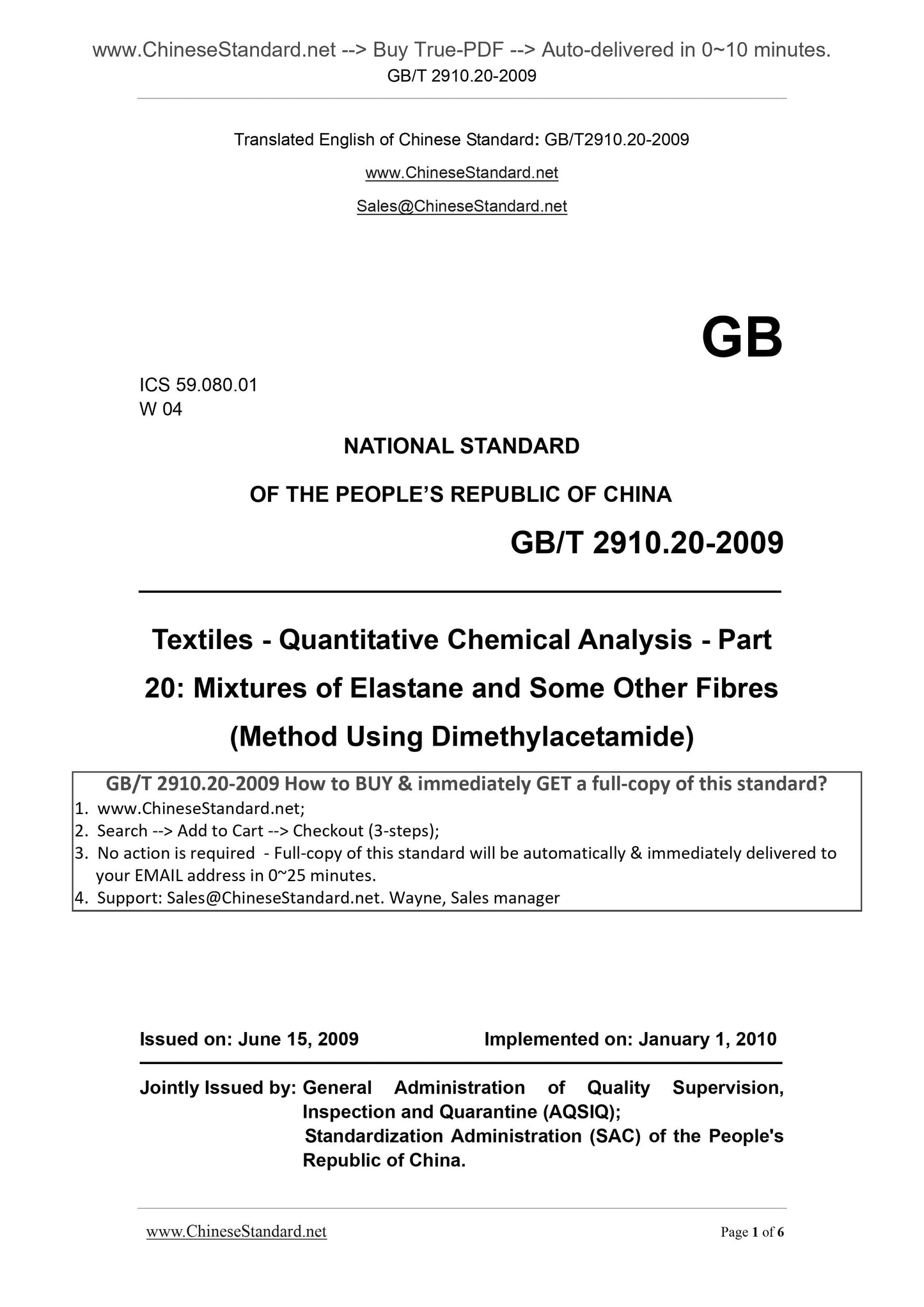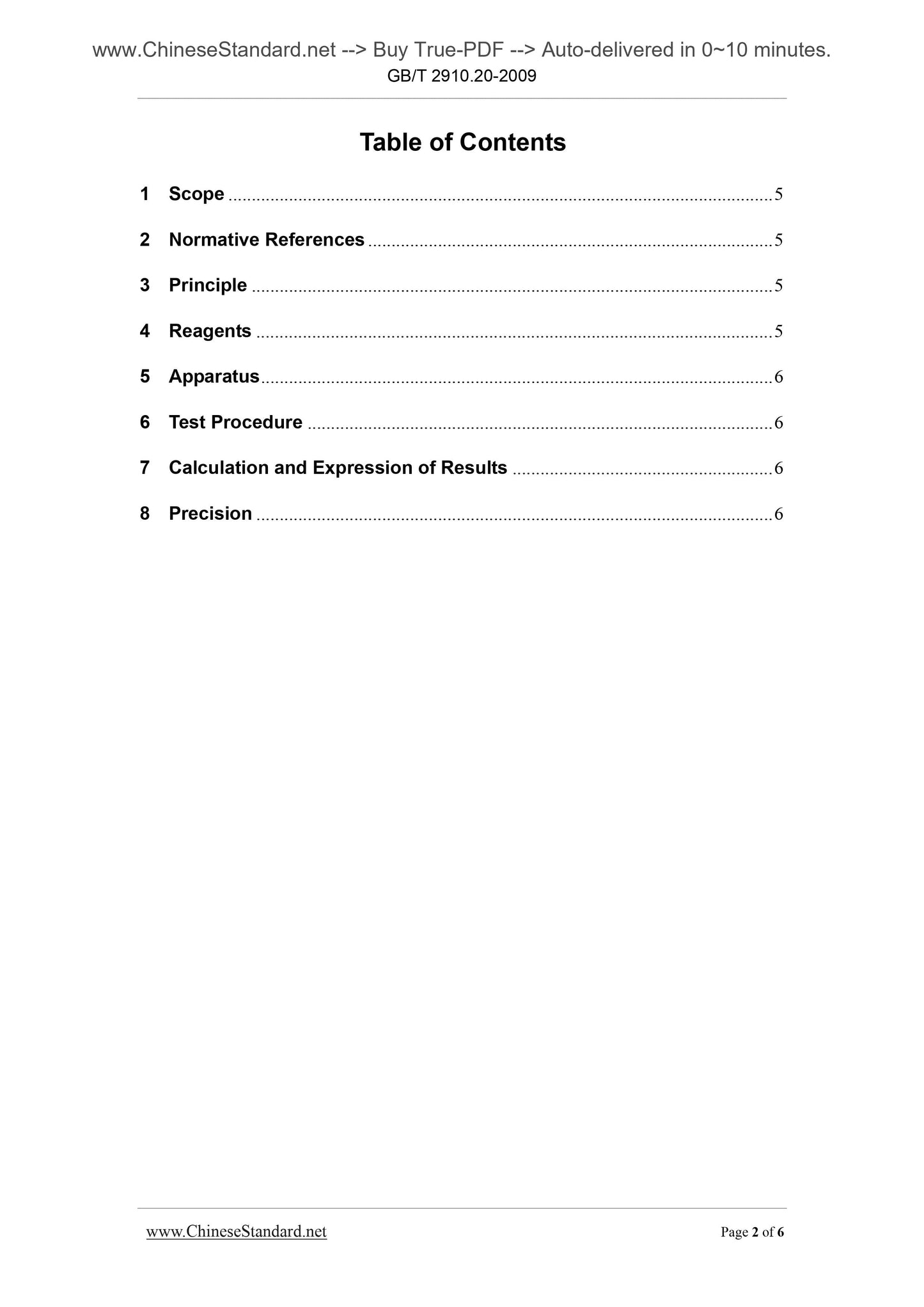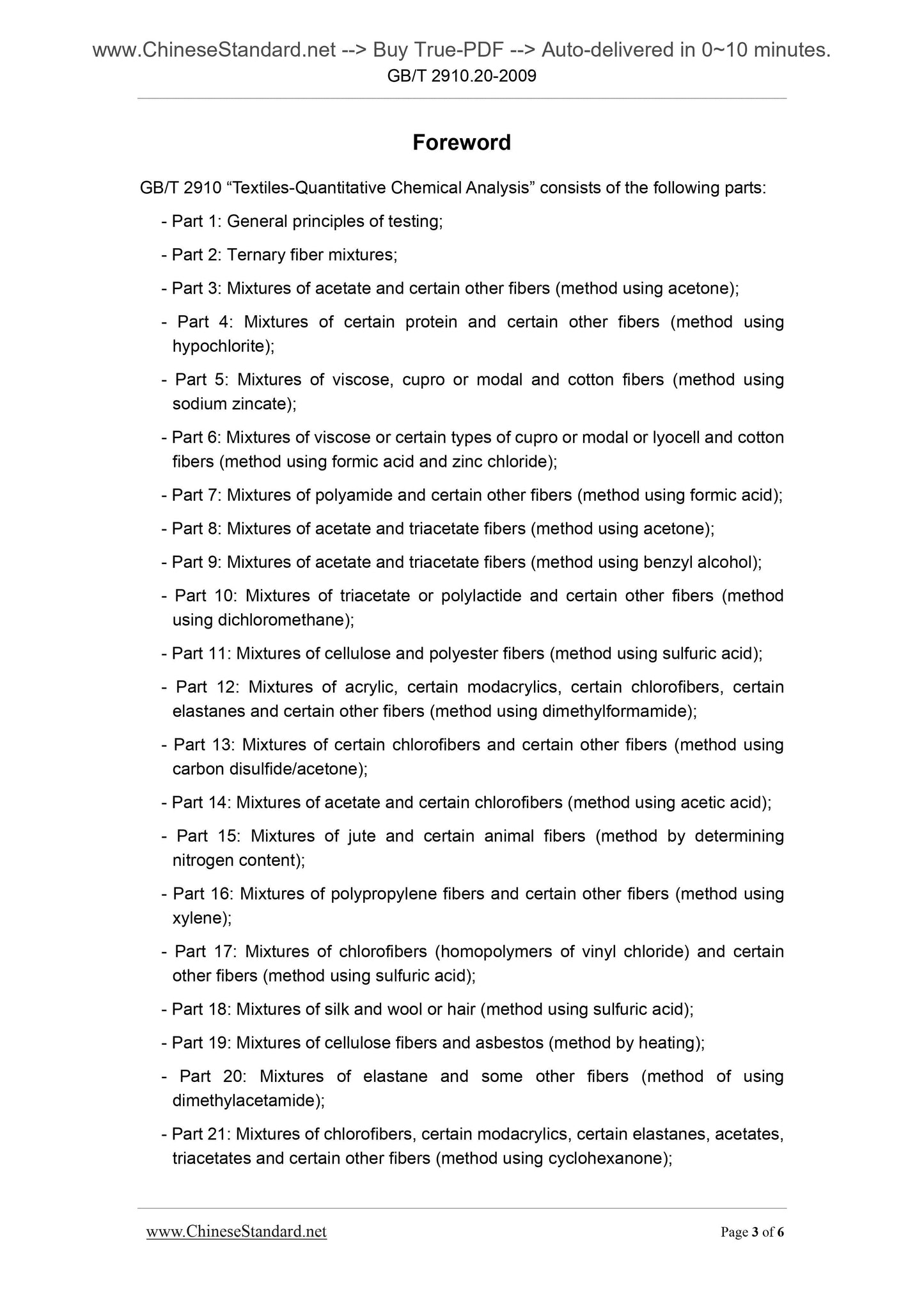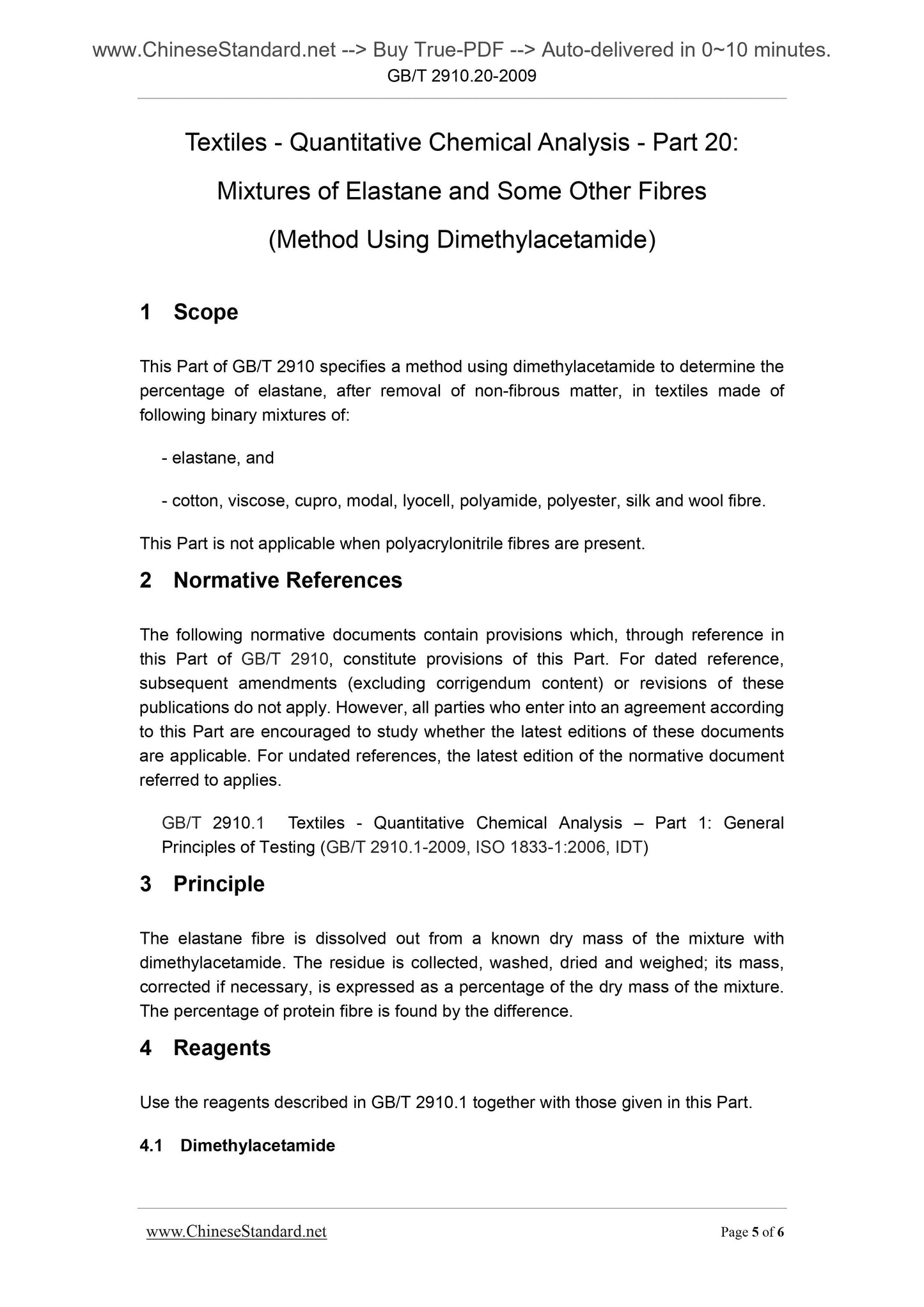1
/
of
4
www.ChineseStandard.us -- Field Test Asia Pte. Ltd.
GB/T 2910.20-2009 English PDF (GB/T2910.20-2009)
GB/T 2910.20-2009 English PDF (GB/T2910.20-2009)
Regular price
$70.00
Regular price
Sale price
$70.00
Unit price
/
per
Shipping calculated at checkout.
Couldn't load pickup availability
GB/T 2910.20-2009: Textiles -- Quantitative chemical analysis -- Part 20: Mixtures of elastane and some other fibers (method of using dimethylacetamide)
Delivery: 9 seconds. Download (and Email) true-PDF + Invoice.Get Quotation: Click GB/T 2910.20-2009 (Self-service in 1-minute)
Newer / historical versions: GB/T 2910.20-2009
Preview True-PDF
Scope
This Part of GB/T 2910 specifies a method using dimethylacetamide to determine thepercentage of elastane, after removal of non-fibrous matter, in textiles made of
following binary mixtures of.
- elastane, and
- cotton, viscose, cupro, modal, lyocell, polyamide, polyester, silk and wool fibre.
This Part is not applicable when polyacrylonitrile fibres are present.
Basic Data
| Standard ID | GB/T 2910.20-2009 (GB/T2910.20-2009) |
| Description (Translated English) | Textiles -- Quantitative chemical analysis -- Part 20: Mixtures of elastane and some other fibers (method of using dimethylacetamide) |
| Sector / Industry | National Standard (Recommended) |
| Classification of Chinese Standard | W04 |
| Classification of International Standard | 59.080.01 |
| Word Count Estimation | 6,614 |
| Date of Issue | 2009-06-15 |
| Date of Implementation | 2010-01-01 |
| Quoted Standard | GB/T 2910.1 |
| Regulation (derived from) | National Standard Approval Announcement 2009 No.8 (Total No.148) |
| Issuing agency(ies) | General Administration of Quality Supervision, Inspection and Quarantine of the People's Republic of China, Standardization Administration of the People's Republic of China |
| Summary | This standard specifies the method unless the following two groups of fibrous material mixture of polyurethane elastic fiber content-to the use of dimethyl phthalate Amine. -Polyurethane elastic fiber and-cotton, viscose fiber, copper ammonia fiber, modal fiber, Lyocell, polyamide fiber, polyester fiber, silk and wool fibers. This section does not apply to the case of polyacrylonitrile fibers exist simultaneously. |
Share







